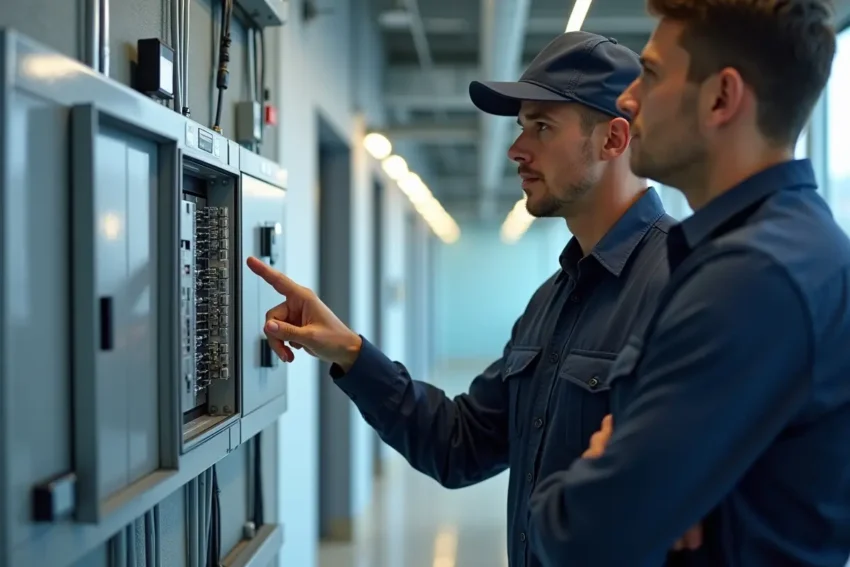When the lights suddenly go out, most people assume it’s a neighbourhood problem or a weather-related issue. But power outages inside modern buildings — the ones with new wiring, advanced systems, and updated switchboards — are far more common than many realise. Even buildings that look brand-new can experience unexpected blackouts or electrical hiccups, and it often comes down to issues that are hidden rather than obvious.
What’s surprising is that many of these problems start long before the outage itself. They build quietly over time in places no one thinks to check. That’s why regular inspections and even specialised tools like Partial Discharge Testing can make such a difference in preventing breakdowns and catching issues before they become major failures.
Here’s what really causes power outages in buildings that seem “too modern” to have them.
Hidden Weaknesses Inside Electrical Systems
Just because a building looks modern doesn’t mean its internal systems are flawless. Behind walls and panels are cables, joints, and components that carry electricity constantly, often under load for hours at a time. These parts can wear out or become damaged in ways that aren’t visible.
Some common internal causes include:
- Loose or poorly installed connections
- Weak spots in cables from manufacturing defects
- Insulation damage over time
- Moisture exposure in areas you wouldn’t expect
Electrical systems are more complex than they seem. A single weak link can cause an entire circuit to shut down.
Modern Buildings Use More Electricity Than Ever
Today’s homes and commercial spaces are filled with devices that didn’t exist a decade ago — smart appliances, multiple screens, chargers, climate control systems, entertainment units, and more. Even if a building is newly built, its electrical system is constantly working harder than earlier designs expected.
This increased demand can lead to:
- Overloaded circuits
- Heat build-up in wiring
- Stress on older components that were reused during renovation
- Tripped breakers that struggle to handle modern loads
A building can be visually modern but electrically overworked.
Small Faults Build Slowly — Then Fail Suddenly
Many power outages seem to happen “out of nowhere.” But in most cases, they’ve been quietly developing for months or even years.
Some examples of slow-forming issues include:
- Gradual insulation breakdown
- Minor cable deterioration
- Small, repeated electrical surges
- Heat-related damage from overuse
Because these happen behind walls or in ceiling cavities, you won’t see them. The first noticeable sign is often a sudden blackout.
Weather Still Affects Buildings — Even If They’re New
Modern buildings aren’t immune to weather-related issues. Rain, humidity, heatwaves, and storms can all affect internal electrical components.
Moisture can creep into:
- Underground cables
- Electrical boxes
- Basement switchboards
- Rooftop or outdoor wiring
Heat can cause expansion of metal components, loosening connections over time. Even well-designed systems face environmental stressors.
Renovations Sometimes Create New Problems
Many modern-looking homes or offices aren’t actually new — they’ve just been updated. Renovations that focus on aesthetics don’t always address the electrical system thoroughly.
Common renovation-related issues include:
- Old wiring left in place behind upgraded walls
- New appliances added without checking circuit load
- Extension cords or temporary wiring being used long-term
- Quick fixes that hide underlying problems
A beautiful kitchen or office space doesn’t guarantee a healthy electrical system behind the scenes.
Technology Can Fail (Even When It’s High-End)
Advanced electrical systems are helpful, but they’re not flawless. Smart meters, building automation systems, and modern switchboards can malfunction — and when they do, entire sections of a building can lose power.
Examples include:
- Faulty sensors shutting off power accidentally
- Automation glitches causing circuit overloads
- Software errors in energy monitoring systems
The more complex the system, the more points at which something can go wrong.
Poor Maintenance Is More Common Than You Think
Modern systems still require regular check-ups. Many outages stem from simple neglect rather than major faults.
Areas often overlooked include:
- Switchboards that haven’t been inspected in years
- Dust buildup inside electrical panels
- Corrosion from moisture exposure
- Ageing cables that were never replaced
Electrical systems may be hidden away, but they still need attention — just like any other part of a building.
Small Warning Signs That Shouldn’t Be Ignored
Modern buildings often give early clues that something’s not right. Paying attention can prevent a future blackout.
Watch for:
- Flickering lights
- Outlets that feel warm
- Frequent breaker trips
- Strange buzzing or humming
- Burning smells, even faint ones
These symptoms usually mean an electrical issue is developing.
The Best Way to Prevent Surprises
Power outages don’t have to be inevitable. Regular inspections, good maintenance, and paying attention to small changes can dramatically reduce the risk of sudden failures.
Smart preventative measures include:
- Having a professional check the system regularly
- Monitoring energy use to spot unusual spikes
- Testing circuits under load
- Asking questions during renovations
- Addressing small issues before they become big ones
Electrical problems rarely start big — they become big when they’re ignored.
Modern buildings may look sleek and updated, but what happens behind the walls tells the real story. When you understand the hidden causes of outages, you’re better equipped to protect your home or workplace from unexpected blackouts — and keep everything running smoothly.

